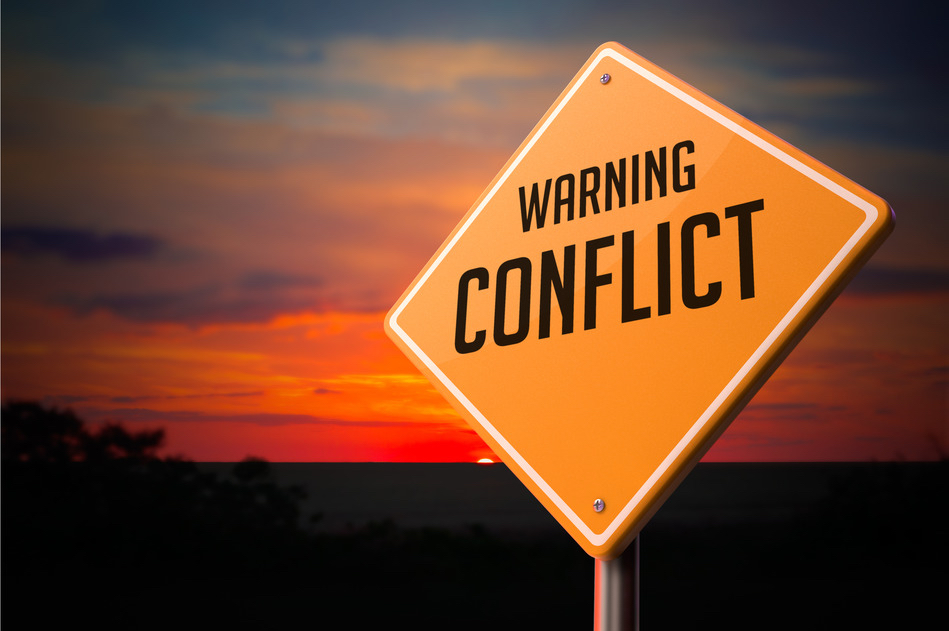
A Process for Managing Peer Conflict
Recently, I was engaged with a client that had undergone a merger. The transition was going reasonably well overall; however, the combined management teams were entangled in challenge and conflict as they attempted to bring together organization functions, structures, and policies.
Conflict among peers brings with it unique nuances that are different than conflict with a boss or direct report. In this situation, it’s generally a relationship of equals and, as such, it’s especially important to consider positional and personal power, influence, and interpersonal savvy. And like all conflict, it shouldn’t be avoided, but rather managed and resolved through a thoughtful process.
Because organizations rely so heavily on collaborative peer relationships (one-on-one or in teams) to achieve results, using a conflict management process that centers on partnership can be a successful strategy for reaching solution. An important first step is to identify common ground that colleagues can agree on.
Working with this newly merged leadership team, we first considered the following, the knowledge of which provided greater context before diving into the particular issues:
- Get to know your peers – who they are, how they respond to specific emotional triggers, what they value, what kind of organizational power they have.
- Think about who you are within that mix – your own responses, values, and power.
- Together, identify “rules of engagement” and how you will address conflict. Establish clear norms, keep these visible and present, and hold everyone accountable for what they’ve agreed upon. It’s important to ensuring a productive exchange of ideas.
Next, we advanced through a series of steps to successfully work through and resolve the conflict:
Define the problem: Create a clear picture of the challenge, describing it in detail, for example: What are the circumstances around it? What are the different perspectives each person brings? What behaviors are team members observing, both among themselves and others? What are the thoughts and feelings about the conflict?
Gather information: Keep it focused on ideas and procedures, not on emotions. Make sure you understand the facts behind the issue that spawned the conflict. Do you and your peer have opposing strategies or tactics for achieving a specific objective? Think through your ideas and give your peer’s ideas due consideration.
Look for options and different perspectives: Find the missing piece. Seek advice from a trusted external source whose opinions and perceptions differ from your own. Use that to help you work through the situation.
Envision a solution: Based on what you know and have learned, imagine how the conflict might play out. If it’s helpful, try writing a short “script” or talking through the scenario with a partner using the following as a guideline:
- Establish rapport and set the stage: How can you break the ice and lay the groundwork for a discussion? Think of what you might actually say.
- Describe the situation and the behavior. How can you state clearly and objectively what you want in a way that is less likely to provoke excessive defensiveness? Plan what you will say.
- Prepare for the interaction: Outline how the other person might respond and what you will say in response.
- Review and reflect: Answer the following after your meeting: What did you learn? What worked? What could be improved?
Evaluate the answer: Focus your plan on ideas and procedures. If you keep your conflict management plan close to that path, then you and your peer have a better chance of creating a successful resolution.
Learn from the experience: After you resolve the conflict, debrief the process with yourself and with your conflict partner, if possible. Did the resolution of the conflict settle the issue? Did it improve your relationship with your peer? If you can’t answer yes to both of these questions, then start planning for the next conflict with this peer. It may take the process more than once to establish rapport, settle an issue, and establish a way of working together through challenges.
It amazes me the degree to which business success depends on the ability of leaders to work together collaboratively and how little time and preparation is typically taken from the start to establish the essential foundation of trust and a true sense of “team.” Like my recently merged client organization, leaders frequently jump into their day-to-day execution of priorities as if they have a historical context of working together, and quickly encounter clashes with values, expectations, incorrect assumptions, and more. Its no wonder they encounter such blocks and barriers.
These steps provide critical considerations as you examine your approach to managing conflict with peers. But before you adopt these tactics, be sure you understand as much about yourself and your peer as you can. Your success at managing peer conflicts relies on your understanding how emotional hot buttons, personal values, and organization and personal power affect, and are affected by, conflict situations and how they influence the resolution.
________
Cartwright, T. (2003). Managing conflict with peers. Greensboro, NC: Center for Creative Leadership.
Also read these related posts:
Perspectives on Conflict with Your Boss
Bridge the Divide of Conflict With Direct Reports
Team Trust – Critical Yet Rare
Into the Storm: Mastering Team Conflict
 About Jeanie Duncan: Jeanie is President of Raven Consulting Group, a business she founded that focuses on organizational change and leadership development in the nonprofit sector. She is a senior consultant for Raffa, a national firm working with nonprofit clients to lead efforts in sustainability and succession planning, executive transition and search. Additionally, Jeanie serves as adjunct faculty for the Center for Creative Leadership, a top-ranked, global provider of executive leadership education.
About Jeanie Duncan: Jeanie is President of Raven Consulting Group, a business she founded that focuses on organizational change and leadership development in the nonprofit sector. She is a senior consultant for Raffa, a national firm working with nonprofit clients to lead efforts in sustainability and succession planning, executive transition and search. Additionally, Jeanie serves as adjunct faculty for the Center for Creative Leadership, a top-ranked, global provider of executive leadership education.

